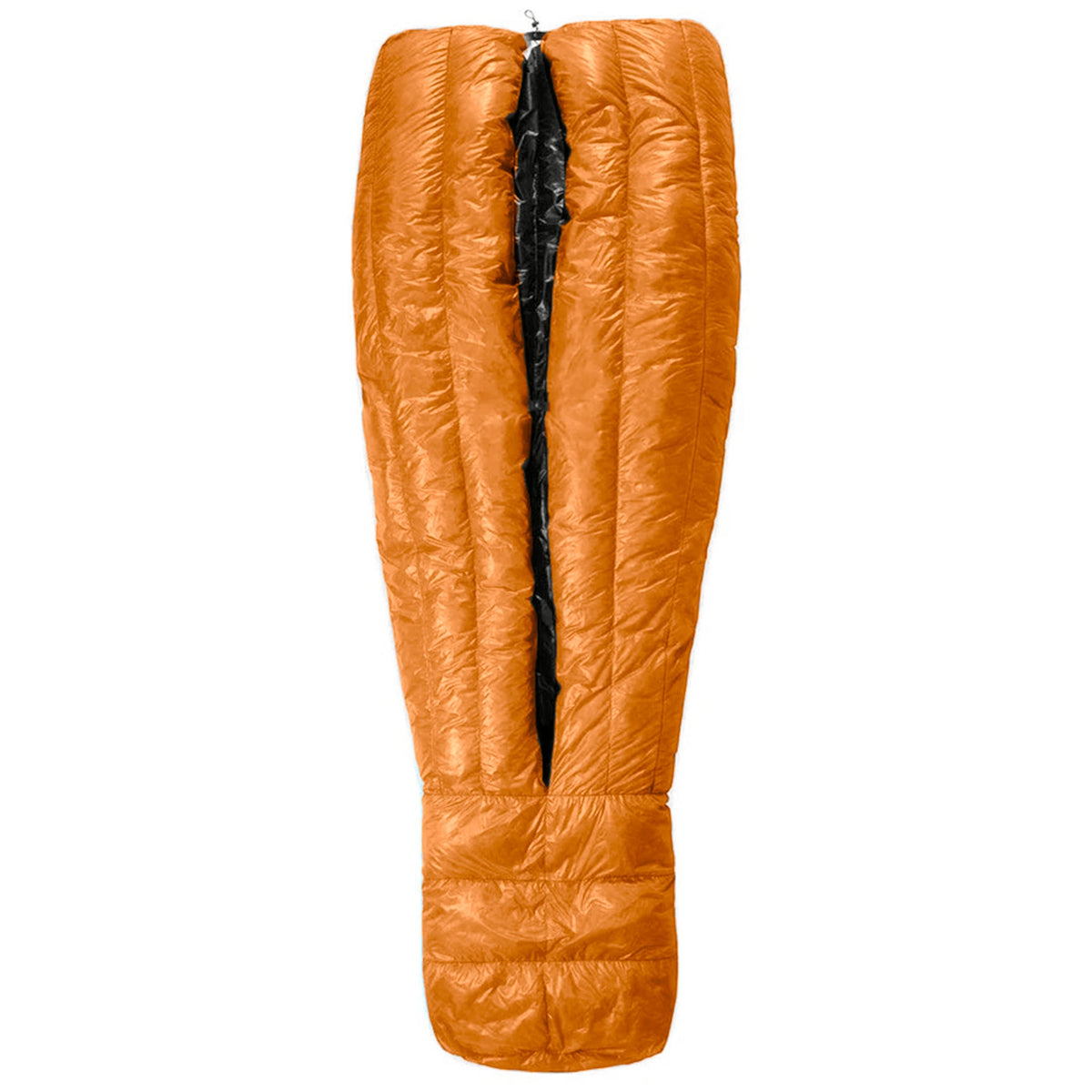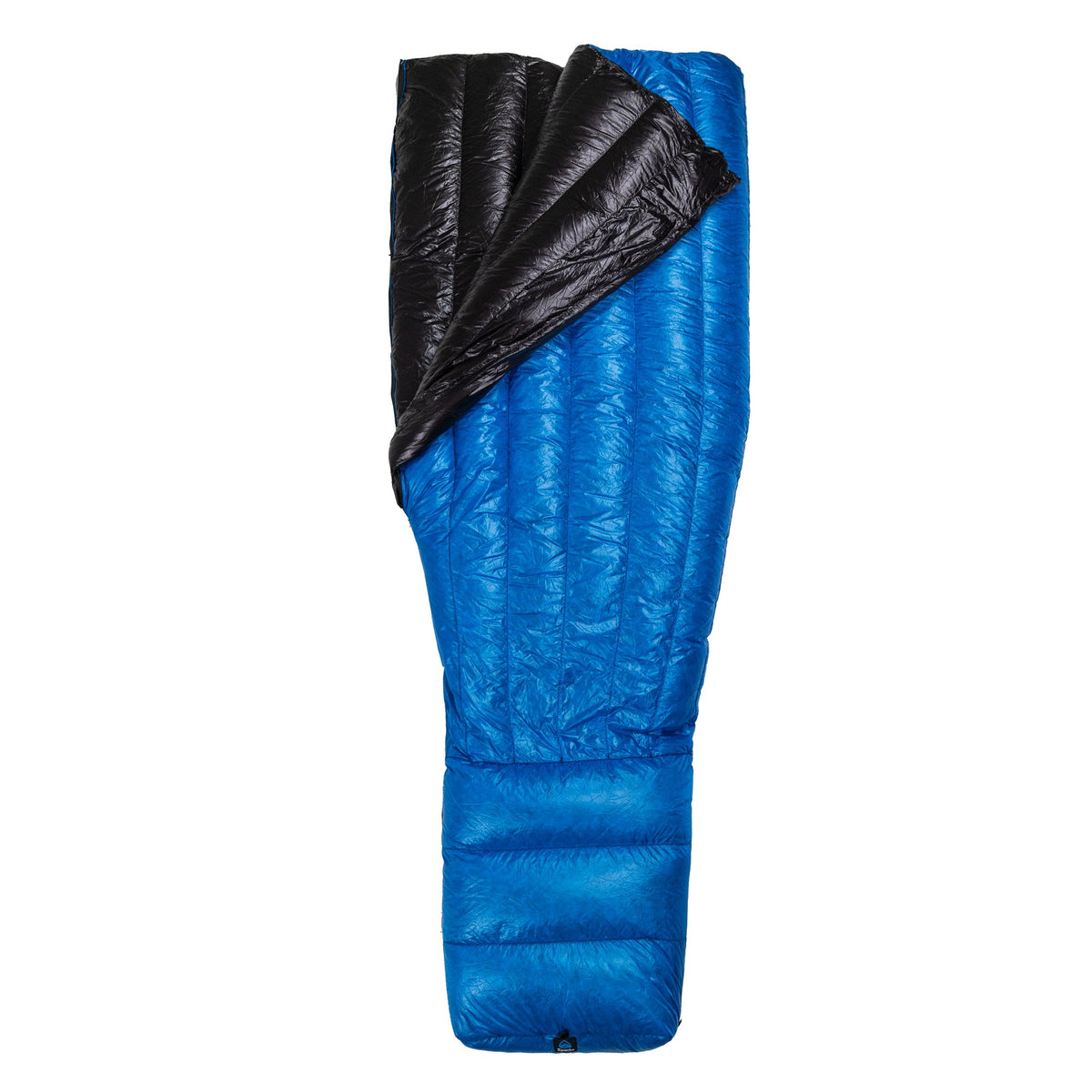Nothing says “cozy” like curling up under a warm quilt! But did you know that your old quilt may not be doing the job it used to? After a few years of use, your trusty old blanket may lose some of its warmth.
If you’ve ever wondered why this happens and what makes a new quilt warmer than an old one, then stay with us in this blog post.
We'll discuss the science behind insulation upgrades, dispel common myths about why your quilt isn't keeping you as warm anymore, and explore essential tips on how to choose the best new quilts for maximum comfort and heat retention.
So let's get started on our journey to improve your home's insulation - all while staying comfortably (and efficiently) warm!
Backpacking Quilts: Lightweight Warmth for the Trail
A quilt is a sleeping blanket designed for backpacking. Quilts are usually used by hikers and thru-hikers who want to minimize the weight of their sleep system without sacrificing warmth or comfort.
They have become popular among adventurers because they are lightweight, compact, and come in a variety of sizes, colors, and fabrics.
Being made with down insulation and silnylon fabric, quilts can be used all year round to keep you warm in the summer or winter months.
The down insulation traps your body heat so it feels warmer than your usual sleeping bag would when camped out during cold nights on the trail.
Plus, quilts usually weigh less than traditional sleeping bags so they don't add too much extra weight to your pack which is great for long distance hikes like thru-hiking!
The Science of Warmth: How Modern Quilts Outperform Old Ones
A quilt is a type of sleeping bag that's specifically designed for backpacking and hiking. It consists of a lightweight shell fabric, usually made from silnylon or polyester, filled with down insulation in varying weights and colors.
Quilts are much lighter than traditional sleeping bags, allowing them to be easily carried on long thru-hikes without weighing you down.
They also feel more natural when you sleep in them as they don't confine your body like a sleeping bag would.
The biggest reason why newer quilts are warmer than an older one is that the insulation material deteriorates over time, resulting in less warmth and comfort while sleeping.
The outer shell of the quilt also tends to wear out over time due to regular use, which can further decrease its ability to keep you warm. In addition, dirt can build up on the quilt's surface over time, affecting its insulation properties as well.
Therefore, it's important to invest in a new quilt every few years if you want maximum warmth and comfort while out camping or backpacking during cooler seasons like winter or springtime - although light summer quilts are available too!
Additionally, simply following proper maintenance protocols such as properly cleaning and storing your quilt will help extend its life significantly so that it stays warm for longer periods of time.

Heat Retention Mastery: Fill Materials and Fabric Choices
A new quilt provides superior heat retention compared to an old one because of the improved quality of the fill materials.
Most quilts feature down or synthetic insulation, which helps keep you warm by trapping heat and preventing it from escaping.
Down is usually seen as a more premium option because it is lightweight, breathable, and offers excellent warmth-to-weight ratio.
However, synthetic materials are typically less expensive and can be more suitable for backpacking in wet climates since they retain their insulation properties even when wet.
Moreover, colors play an important role in retaining body heat; lighter colors are usually best for summer months while darker colors will help retain more warmth during colder weather.
Down vs. Synthetic: Choosing Your Ideal Insulation
when it comes to selecting a quilt, insulation plays a vital role in the overall warmth of the quilt. Generally speaking, down is considered to be the most efficient insulator and is usually found in backpacking quilts and thru-hiking sleeping bags.
Down provides superior warmth while still remaining lightweight and low-bulk. However, synthetic materials such as silnylon are often used for summer sleeping bags because they tend to be less expensive than down and still provide adequate insulation.
The type of fabric used for the outer part of a backpacking quilt can also play an critical part in its warmth. There are usually two options: nylon or nylon taffeta.
Nylon tends to be more breathable - helpful if you tend to sleep hot - but polyester offers more durability so it might be a better choice if you plan on using your quilt frequently or taking it on camping trips with you.

Upgrading Your Sleep System: Benefits of Modern Quilt Design
A new quilt offers a range of benefits to hikers, backpackers, and campers. First and foremost, it provides improved warmth compared to an old quilt due to the higher quality materials used in its construction.
Newer quilts use lightweight yet durable fabrics such as silnylon or down that have superior heat retention properties. This means you can stay warmer on cold nights without having to add more bulk or weight than usual.
Furthermore, newer quilts feature innovative technologies that improve breathability and wick away moisture for a better sleep experience.
Additionally, modern designs with vibrant-colored fabrics make your setup look much more attractive when you're out on the trail or camping in style!
Loft and Compression: Why New Quilts Retain Heat Better
When it comes to keeping warm on the trail, nothing beats a good quilt. It's lightweight and provides excellent warmth-to-weight ratio, making it popular among backpacking and thru-hiking enthusiasts.
Quilts are usually crafted out of durable fabrics such as nylon or silnylon and come in a variety of colors to match your style.
A new quilt is typically warmer than an old one because its insulation has not been compressed over time like an older quilt would have been.
The more compression that occurs, the less efficient the fabric is at trapping heat, which will make you feel colder while sleeping - no fun!
Replacing your old quilt with a new one helps improve heat retention significantly by restoring its fluffy loftiness and providing extra cushioning from cold air drafts.
The filling also plays an important role in determining how much heat is retained - down fill retains more warmth than synthetic fill so choose accordingly depending on when you intend to use it (i.e., summer or winter).
A well-made down filled quilt can be surprisingly lightweight too!
Insulation Innovation: The Latest in Quilt Fill Technology
When it comes to backpacking, a quilt is the ideal way to stay warm during those chilly nights. Quilts are usually made of down or synthetic insulation and come in a range of colors and weights so you can find one that feels just right for your sleeping needs.
For summer thru-hiking, lighter weight quilts are usually the preferred option as they tend to be more breathable and don't weigh too much.
To get even better performance from your quilt, consider upgrading the fabric. Silnylon is an excellent material choice for improved insulation as it has lower thermal conductivity than other fabrics; this means that silnylon will help keep heat in your body while also reducing condensation build up inside of your quilt.
You would usually use a thicker version of this material for colder climates and temperatures, but thinner versions are also available that work well in warmer weather.
The Breathability Factor: Balancing Warmth in Modern Quilts
When it comes to backpacking and thru-hiking, breathability is an important factor when selecting a quilt. A breathable quilt will allow your body heat to escape and keep you from getting too hot or too cold while sleeping outside.
Most of the time, the fabrics used for quilts are usually silnylon (silicone impregnated nylon) or down in various colors and weights.
The fabric choice depends on the season during which you would like to use your quilt — for summer, a lighter weight silnylon provides adequate warmth, but for winter months, one might opt for heavier down.
No matter what fabric you choose, just remember that breathability plays a huge role in how warm your quilt feels and performs!
Durability in the Wilderness: Rugged Quilt Construction
Backpacking quilts are designed to withstand rugged outdoor use; many come with waterproof fabric. Quilts made from high-quality down have been known to last for years, even when used extensively while hiking and camping.
In most cases, the outer fabric is usually made from a durable material such as silnylon or ripstop nylon which can resist tears and water absorption.
For summer thru-hiking trips, a quilt with less insulation would usually be enough; whereas for colder climates or winter sleeping bags a heavier one would work better.
Quilt Maintenance: Maximizing Lifespan and Performance
It's important to properly care for and maintain any quilt, especially if it will be used for backpacking or thru-hiking. It should be cleaned and stored regularly to ensure it is in peak condition when needed.
Here are some tips on how to keep your quilt in tip-top shape:
- Cleaning - Quilts should be washed about every six months using a gentle detergent and cold water, and they should never be put into the dryer. Hang the quilt up to air dry outside or indoors in a well ventilated area.
- Storing - This depends on what type of fabric your quilt is made from; down usually needs more protection than synthetic fibers like silnylon which can survive being crushed into small spaces during long thru-hikes. For summer season use, store your quilts in breathable bags such as cotton totes to protect them from dirt and dust buildup without trapping moisture inside the bag which could damage the material over time. For winter season use, consider storing your quilts with cedar chips or lavender sachets added for extra protection against pests like moths while also adding an inviting scent when you're ready to sleep!
When done correctly, these simple steps can help extend the life of your new quilt and maximize its warmth potential so that you get maximum value out of each one!
Additionally, always check labels before washing any new quilts. Different fabrics require different cleaning instructions based on colors used or treatments used by manufacturers that would otherwise not apply if you were dealing with natural materials alone.
Conclusion: Embracing Innovation in Backpacking Quilt Design
In summary, your new quilt is usually warmer than an old one because its insulation has not been compressed over time and the fabric used is generally of a higher quality than the older one.
Additionally, newer quilts feature improved breathability, wicking properties, and innovative technologies that allow them to retain heat better.
When choosing a backpacking quilt, make sure to consider the warmth-to-weight ratio, fabric type, and insulation fill to make sure you get the best product for your needs.
With proper maintenance, your new quilt will provide you with superior warmth and comfort for many years to come!







